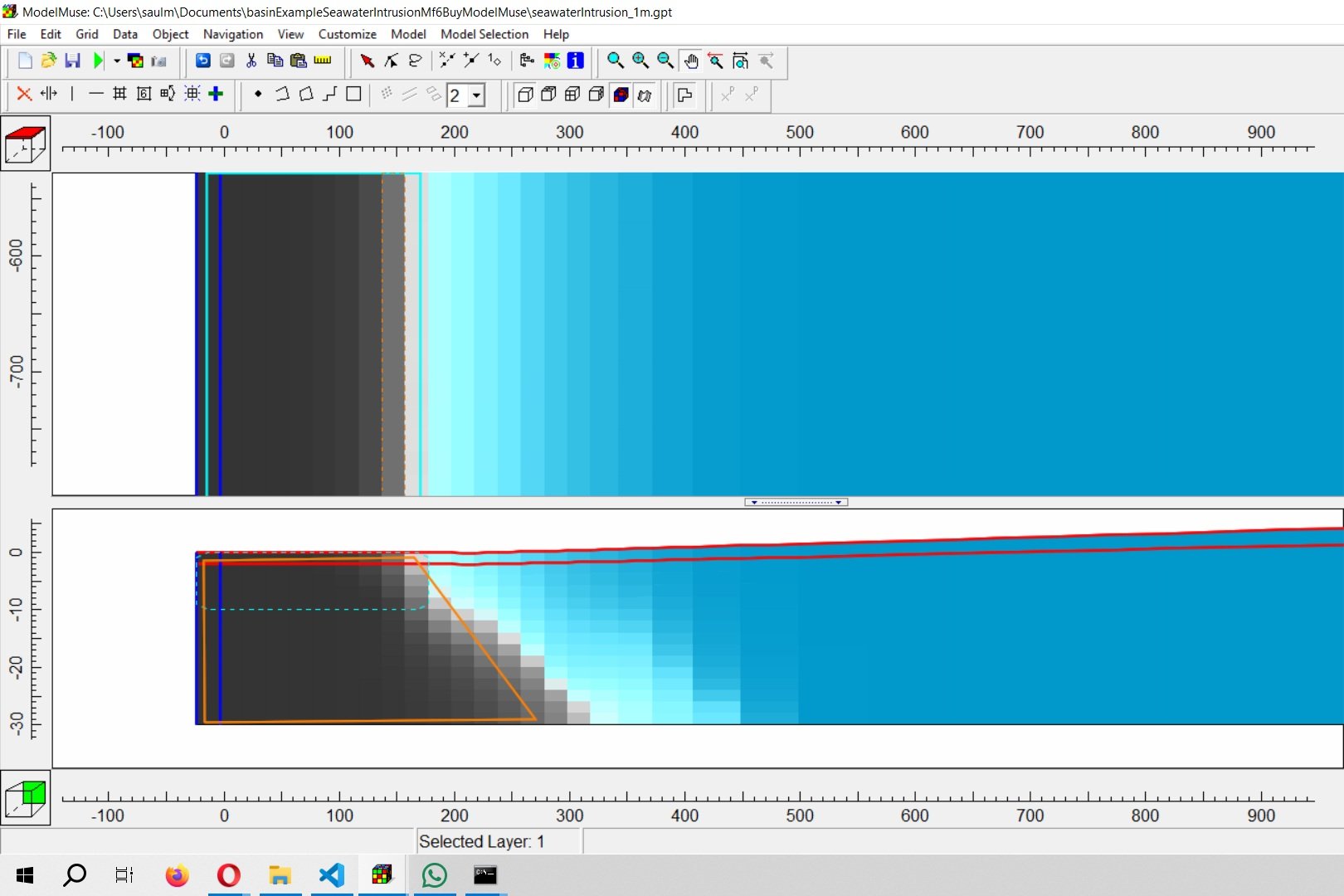#import required packages
import sys, os, re
import numpy as np
import matplotlib.pyplot as plt
import pandas as pd
from sklearn.metrics import mean_squared_error
from math import sqrt
#open the modflow6 calculated heads on piezometers
hobSim = pd.read_csv('../Model/Model1.ob_gw_out_head.csv',index_col=0)
hobSim = hobSim.transpose()
hobSim.rename(columns={1.0:'Simulated'}, inplace=True)
hobSim.head()
| time |
Simulated |
| OBS_1 |
3681.363618 |
| OBS_2 |
4266.586289 |
| OBS_3 |
4189.450617 |
| OBS_4 |
3976.768422 |
| OBS_5 |
4337.856404 |
#open the piezometric data
hobObs = pd.read_csv('../Txt/Piezometers.csv',index_col=0)
hobObs.head()
|
Easting |
Northing |
surfElev |
screenElev |
piezometricLevel |
| Piezometer |
|
|
|
|
|
| OBS_1 |
618988.927 |
8355366.926 |
3794 |
3616.851 |
3665.610949 |
| OBS_2 |
626323.406 |
8366538.257 |
4313 |
4182.432 |
4236.052783 |
| OBS_3 |
627046.160 |
8361952.077 |
4377 |
4089.335 |
4139.527380 |
| OBS_4 |
622872.221 |
8360101.290 |
4144 |
3901.771 |
3949.464447 |
| OBS_5 |
626634.547 |
8368930.081 |
4456 |
4249.271 |
4308.509850 |
#create a compiled pandas dataframe and calculate residual
piezoDf = pd.DataFrame()
piezoDf['Observed'] = hobObs['piezometricLevel']
piezoDf['Simulated'] = hobSim['Simulated']
piezoDf['Residual'] = piezoDf['Observed'] - piezoDf['Simulated']
piezoDf.head()
|
Observed |
Simulated |
Residual |
| Piezometer |
|
|
|
| OBS_1 |
3665.610949 |
3681.363618 |
-15.752669 |
| OBS_2 |
4236.052783 |
4266.586289 |
-30.533506 |
| OBS_3 |
4139.527380 |
4189.450617 |
-49.923237 |
| OBS_4 |
3949.464447 |
3976.768422 |
-27.303975 |
| OBS_5 |
4308.509850 |
4337.856404 |
-29.346554 |
#get some values about the residual
min=np.min(piezoDf.describe().loc['min'].values[0:2])
max=np.max(piezoDf.describe().loc['max'].values[0:2])
print("Res min: %.2f Res max: %.2f"%(piezoDf['Residual'].min(),piezoDf['Residual'].max()))#
Res min: -49.92 Res max: -3.16
# generate observed - calibrated plot
x = np.linspace(min-5, max+5, 100)
fig = plt.figure(figsize=(10,8))
plt.plot(x, x, linestyle='dashed')
plt.scatter(piezoDf['Observed'],piezoDf['Simulated'], marker='o', c=piezoDf['Residual'])
cbar = plt.colorbar()
cbar.set_label('Residual (m)', fontsize=14)
plt.xlim(min-10,max+10)
plt.ylim(min-10,max+10)
plt.xlabel('Observed Head (m)', fontsize=14)
plt.ylabel('Simulated Head (m)', fontsize=14)
Nrmse = sqrt(mean_squared_error(piezoDf['Observed'].values, piezoDf['Simulated'].values))/\
(piezoDf['Observed'].max()-piezoDf['Observed'].min())*100
plt.title("NRMSE: "+str(Nrmse))
fig.tight_layout()

























